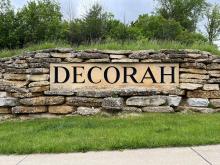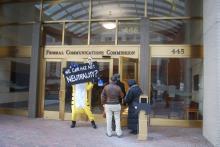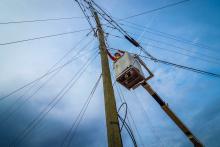
Five years ago, the Central Virginia Electric Cooperative (CVEC) announced the creation of the Firefly Broadband initiative, a subsidiary specifically built to leverage the co-op’s existing electrical assets to deliver affordable fiber to 13 underserved Virginia counties.
Half a decade later, the coop says it has successfully completed its $150 million expansion project, deployed 3,600 miles of new fiber, passed 40,000 total homes and businesses, and directly connected 20,000 state residents–many for the first time ever–in less than 52 months.
“Central Virginia Electric Cooperative partnered with Conexon to perform a feasibility study for a fiber build across their entire service territory – 13 counties and 3600 miles,” CVEC VP of Communications Melissa Gay told ILSR. “Once the target costs, offerings and take rates were determined, we chose to race to secure supplies and labor. Finding great partners has been a tremendous help to the success of our project.”
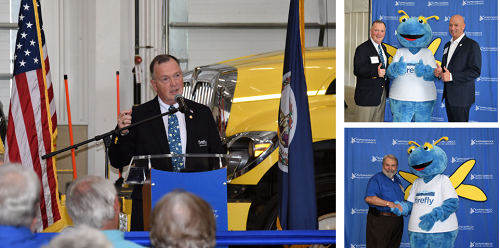
Buoyed by numerous grants including a $28 million combination loan and grant from the USDA's ReConnect Program, Firefly now provides local residents symmetrical 100 Mbps (megabits per second) fiber for $50 a month, and symmetrical 1 Gbps (gigabit per second) service for $80 a month. There are no contracts and no data caps.
About 90 percent of households connected had no broadband access previously, according to Bruce Maurhoff, Firefly’s senior vice president and chief operating officer.
“We placed 14.5 million feet of strand and lash fiber on poles and another 3 million feet in conduit underground,” Maurhoff told the National Rural Electric Cooperative Association (NRECA). “That is enough fiber to reach from the first pole where we began in Appomattox all the way to Anchorage, Alaska. And we did it in 52 months.”
Preparing for the ambitious $150 million project required CVEC to perform make-ready work across 4,500 miles of distribution lines, replace 5,738 utility poles, set 6,490 anchors, and install 28 communication huts as network nodes.
Gay and Firefly CEO Gary Wood spoke with ILSR about some of the challenges faced by the network build, as well as many of the frustrations locals had with substandard and unaffordable broadband access, for Episode 358 of the Community Broadband Bits Podcast.
In addition to the $28 million loan and grant CVEC received from the USDA ReConnect Program, the coop received $66 million from The U.S. Department of Agriculture’s Rural Utilities Service Electric Program, financing from the FCC’s Connect America Funds Auction and Rural Digital Opportunity Fund, and numerous state and county grants.
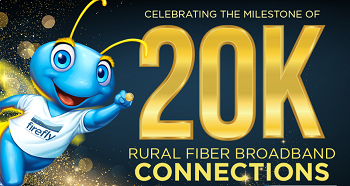
CVEC also recently received an additional $30 million courtesy of the USDA’s Electric Loan Program, which will be used to connect nearly 1,700 electrical consumers and deliver more than 200 miles of line and transmission system upgrades.
CVEC Has Bigger Plans In Partnership With The RISE Project
“Now that all 38,000 members of Central Virginia Electric Cooperative have access to reliable, affordable fiber broadband, Firefly Fiber Broadband has launched the Regional Internet Service Expansion (RISE) project to expand connectivity to another 40,000 households and businesses in central Virginia,” Gay told ILSR.
Through RISE, CVEC, Firefly and numerous local cooperatives and utilities will focus on expanding access across 13 heavily-underserved counties, again delivering affordable next-generation access for the first time to many locals.
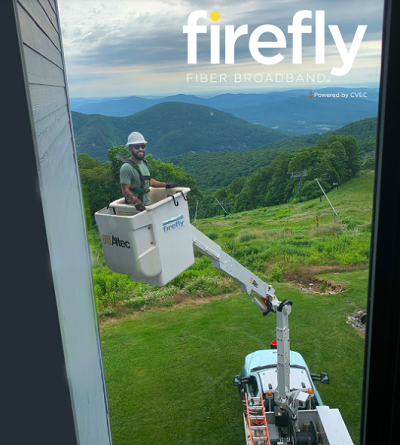
“In partnership with investor-owned utilities Appalachian Power and Dominion Energy and Rappahannock Electric Cooperative, a neighboring cooperative, Firefly will serve as the last mile and Internet service provider for thousands of underserved customers served by these electric utilities,” she said.
Other Firefly representatives told The Farmville Herald that the project is making significant progress in Cumberland County. County officials recently fielded feedback from frustrated local residents, many of which either lack access entirely, or are subjected to high prices, slow speeds, and spotty access courtesy of regional monopolies.
“We have also completed the initial work on our USDA ReConnect grant-funded project with our communications hut placed and the first fiber extended down along Route 60 toward the village of Cumberland Courthouse,” Malinowski said. “We will begin connecting new accounts in that area over the next few months as well.”
Firefly officials say there have been some minor deployment delays due to the complexity of coordinating so many partnerships, but expects the lion’s share of the work to be completed this fall and winter.
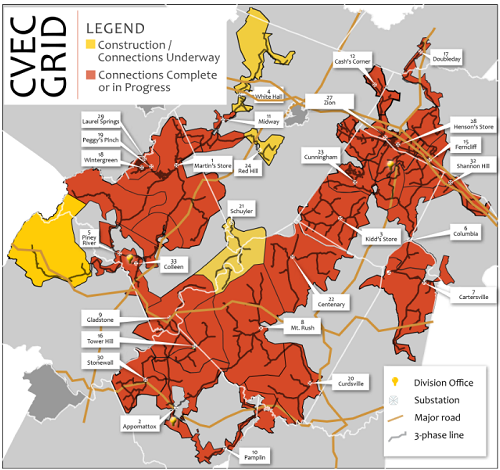
“We will not let these issues deter us from continuing to build our network and assure universal access to affordable and reliable broadband throughout Cumberland and other rural counties,” she said.
Last May, officials celebrated the progress Rappahannock Electric Cooperative (REC) and Firefly are making in bringing affordable high-speed Internet to unserved and underserved communities in Louisa and Goochland counties. Firefly is leasing access to 2,650 miles of REC fiber across Louisa, Goochland, Greene, Madison and Albemarle counties.
CVEC maintains a status page designed to update locals on the status of current deployments. Currently, the Coop states it’s deploying roughly 20 miles of fiber and passing 200 locations each week.
Co-ops Lead The Charge, BEAD Money On Horizon
The efforts by CVEC highlights how broadband and electric cooperatives and various utilities are at the forefront of disrupting traditional telecom monopoly power, bringing affordable access to communities that have been waiting a generation to be deemed worthy to serve.
All told, cooperatives currently serve an estimated 42 million Americans, including 92 percent of counties facing persistent poverty. Such counties are particularly prone to broadband underinvestment, limited competition, and counterproductive lobbying by the nation’s biggest, most politically powerful, telecom monopolies.
The parallels between modern broadband expansion efforts and rural electrification efforts a century ago–are again hard to ignore. CVEC was formed in 1937 when only 10 percent of Central Virginia’s rural population had access to electricity. Like so many cooperatives, CVEC is now leveraging that experience to bridge the state’s long standing digital divide.

Virginia currently ranks 37th in overall broadband access and 44th in terms of state resident access to gigabit capable broadband. Like many states, a lack of affordable coverage was obfuscated by unreliable state and federal broadband mapping, which the state is attempting to address ahead of an historic infusion of new broadband subsidies.
Virginia is poised to receive more than $1.4 billion in Broadband Equity, Access, and Deployment (BEAD) grants courtesy of the Infrastructure Investments and Jobs Act; money that will be managed by the Virginia Telecommunication Initiative (VATI), which last February awarded an additional $59.5 million in grants to 14 projects across 20 localities.
Cooperatives–which for nearly a hundred years have done the heavy lifting required to connect those deemed too costly to serve–hope to leverage that historic funding to once again finish the job.
Header image courtesy of Rawpixel, CC0 1.0 Universal (CC0 1.0) Public Domain Dedication
Inline images courtesy of CVEC/Firefly Broadband



